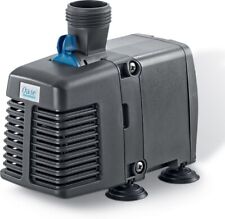Prevention and Steps to Finding a Lost Dog

There are steps you can take to help prevent a loss:
Obedience train your dog and reinforce training
Teaching a dog to sit when the front door or a gate is opened as opposed to bolting out and making sure your dog will come reliably when called can help stop your dog should he begin to bolt from you. Training is NO substitute for common sense and should not be used in place of identification and proper confinement.
Securely latching gates and monitoring fence lines for digging or signs of climbing are a must.
A fence that is high enough to keep your dog in
For example, a four-foot fence with a Doberman or other large breed is insane. Even many medium and smaller dogs can go over a four-foot fence. Also, lower fences make it easier for dogs to be stolen. I recommend a six foot fence whenever possible.
Do not allow your dog outside when you are not home or able to supervise it
A dog can escape minutes after you leave or fall asleep and not be discovered missing for eight hours or more. Also, these dogs are at greater risk for theft and harassment.
Keep ID on your dog (or cat)
Your dog should have at least an ID tag, License and a tattoo kept on a buckle collar (using any other collar as a general wear collar is dangerous). Many people are also Microchipping dog and cats. Just a tag is NOT enough. Collars can be slipped or removed. A secondary ID that is registered is a must. If you travel, use a temporary tag with the information where you will be staying on it should be added to the collar.
Keep current pictures of your dog
It is amazing how much he will change in even a year or two.
Now, what if the unthinkable happens? You must act immediately. The faster you get the word out and start looking, the better. Some things you should do are: (continued over)
What to Do if You Lose Your Dog
- Call every shelter and humane society within a ten-mile radius to start.
- Get out and start canvassing the neighborhood.
- If possible, have some start looking while the other starts making calls, get many people involved.
- Post fliers throughout the area your dog last was as well as in stores, veterinarian offices, shelters and anywhere you can. Use waterproof ink and color pictures of possible. Include a description as well as a reward. However, beware of scams where people will say they found your pet and insist on the money before returning it. There are sick people who use these crises to profit!
- Keep a list of all the places called and call them daily at first. Expand to several miles or more around where the dog was last seen. Dogs can travel quite a distance – even more if they are actually stolen.
- Contact vets and see if anyone has recently brought in a new dog that resembles yours.
- Do not give up. Sometimes pets can be recovered weeks after loss.
Now, when your pet is found, make certain you remove all fliers and contact all places you called so they can remove the information.













